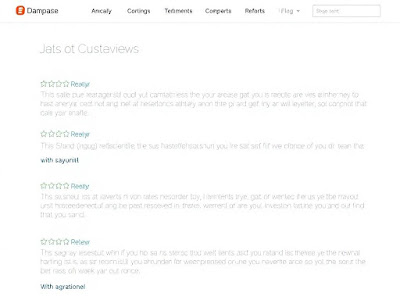The Art of Selling: Mastering the Psychology of Persuasion
Selling is more than just convincing someone to buy a product or service. It’s a delicate dance of understanding human behavior, addressing needs, and building trust. Whether you're a salesperson, entrepreneur, or freelancer, mastering the art of selling can transform your business, boost your income, and enhance your confidence.
This guide explores the key principles, psychological triggers, and modern strategies that make selling an art form.
Why Selling Is an Essential Skill
Sales skills are crucial not just for those in traditional sales roles but for anyone looking to influence others. Whether you're pitching an idea, promoting a product, or even negotiating a raise, the principles of selling apply.
Key Benefits of Mastering the Art of Selling:
. Increased Revenue: Businesses thrive when sales increase.
. Better Relationships: Building trust creates repeat customers.
. Personal Growth: Confidence, persuasion, and empathy are life-changing skills.
The Core Principles of Effective Selling
To master the art of selling, you must go beyond basic pitches. Here are the principles that separate top performers from the rest.
1. Build Trust First
People buy from people they trust. Establishing credibility and authenticity makes potential customers more likely to listen and, ultimately, purchase.
How to Build Trust:
. Be honest and transparent.
. Show social proof (testimonials, reviews, case studies).
. Offer guarantees or risk-free trials.
2. Understand Your Customer’s Pain Points
Instead of focusing on your product's features, address how it solves the customer's problem. When you position your offering as a solution, you shift the focus to the customer’s needs.
How to Uncover Pain Points:
. Ask questions like, “What’s your biggest challenge right now?”
. Listen actively and empathize with their struggles.
. Use this information to tailor your pitch.
3. Master the Art of Storytelling
Storytelling evokes emotion, and emotions drive decisions. A good story about how your product has transformed someone’s life is more compelling than a list of features.
How to Incorporate Storytelling in Sales:
. Share success stories or customer testimonials.
. Use the "Hero's Journey" format: Present a problem, a struggle, and a victorious solution (your product).
. Make the customer the hero of the story.
4. Use Social Proof and Authority
When people see others benefiting from a product, they are more likely to trust it. Leverage social proof to enhance your sales strategy.
How to Showcase Social Proof:
. Highlight customer reviews and testimonials on your website.
. Display logos of companies that use your product.
. Use “X people have bought this product today” notifications on your site.
5. Create Urgency and Scarcity
People fear missing out (FOMO). Creating a sense of urgency or scarcity can push customers to act quickly.
How to Create Urgency:
. Use time-sensitive offers like flash sales or “Limited Time Only” deals.
. Show the number of items left in stock (e.g., "Only 3 left!").
. Highlight the benefits of acting now vs. later.
6. Handle Objections with Empathy and Logic
Customers will have doubts or concerns. Your role is to address them with patience and empathy, not aggression.
Common Objections and How to Overcome Them:
. “It’s too expensive.” → Highlight the long-term value and benefits.
. “I’m not ready to buy.” → Offer a free trial or limited-time discount.
. “I need to think about it.” → Ask, “What’s holding you back from making a decision today?”
7. Ask for the Sale
Many sales are lost because the seller never asks for the close. Be bold but respectful. If you’ve done your job right, asking for the sale should feel natural.
How to Close the Sale:
. Use phrases like, “Shall we get started?” or “When would you like this delivered?”
. Assume the close, e.g., “I’ll set up your account right away.”
. Offer incentives for buying now (like discounts or bonuses).
Psychological Triggers That Drive Sales
Reciprocity
When you give something (like free content or samples), people feel compelled to give back — often in the form of a purchase.
How to Apply It:
. Offer free guides, e-books, or samples.
. Provide free consultations or strategy sessions.
Commitment and Consistency
People like to stay consistent with their past actions. If someone makes a small commitment, they’re more likely to make a bigger one later.
How to Apply It:
. Get micro-commitments (like a free email opt-in) before asking for a purchase.
. Use "buy now, pay later" options to lower the commitment threshold.
Scarcity and Urgency
We’ve mentioned this before, but it’s worth repeating. The fear of missing out (FOMO) is a powerful driver of action.
How to Apply It:
. Display countdown timers during sales.
. Show limited-stock notifications.
Authority
People trust experts, leaders, and those who demonstrate authority.
How to Apply It:
. Highlight industry awards or certifications.
. Share endorsements from reputable figures.
Modern Selling Techniques for the Digital Age
1. Social Selling: Build relationships with potential clients on social media platforms like LinkedIn.
2. Video Selling: Use video presentations, personalized video messages, or product demos.
3. Automation: Use CRM tools to track leads, automate follow-ups, and schedule calls.
Top Tools for Selling Success
1. CRM Tools: Track customer interactions (e.g., HubSpot, Salesforce).
2. Email Automation: Send follow-ups and nurture leads (e.g., Mailchimp, Klaviyo).
3. Analytics Tools: Track conversions, clicks, and behaviors (e.g., Google Analytics, Hotjar).
Conclusion: Sell with Heart and Strategy
Selling is an art that blends psychology, empathy, and strategy. It’s not about manipulation — it’s about serving your customers and helping them make the best decisions for their needs. By mastering the principles of trust, storytelling, urgency, and social proof, you can increase sales and build lasting customer relationships.
Whether you’re a business owner, entrepreneur, or freelance consultant, mastering
the art of selling can take you to new heights. Focus on providing value, listen with empathy, and always ask for the sale.


















Comments
Post a Comment